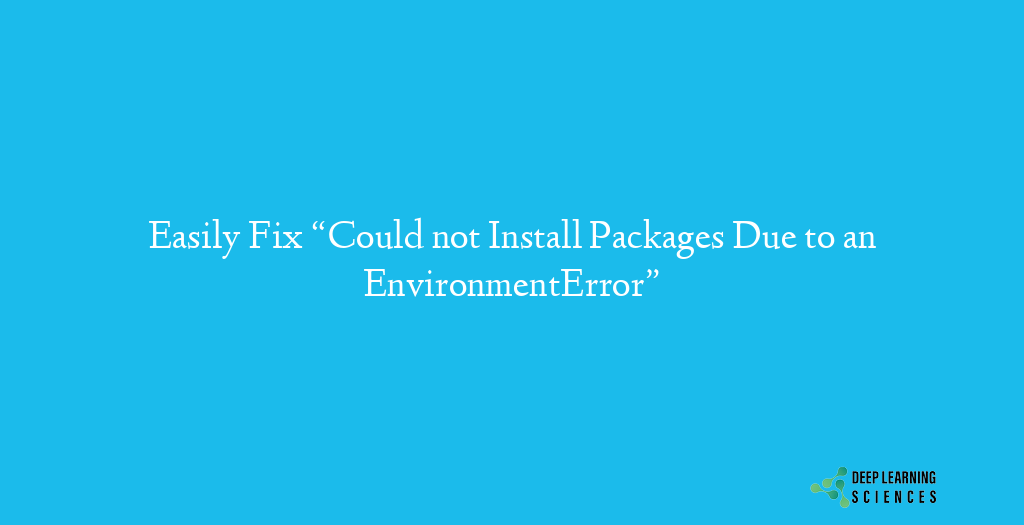If you’ve ever tried to install a package using pip, only to run into an error message that says “Could not install packages due to an EnvironmentError,” then you know how frustrating it can be. This error can occur for a variety of reasons, but fortunately, there are a few simple steps you can take to fix it. In this article, we’ll walk you through the process of troubleshooting and resolving this error so that you can get back to installing the packages you need.

Causes of the Error
The “Python Could Not Install Packages Due to an EnvironmentError” error message can occur due to various reasons. Here are some of the most common causes of the error:
- Incorrect Python environment configuration
- Conflicting package dependencies
- Insufficient permissions to install packages
- Incompatible Python versions
Troubleshooting Steps
In this section, we will provide you with a step-by-step guide to troubleshoot and fix the “Python Could Not Install Packages Due to an EnvironmentError” error message.
Step 1: Check Python Version
The first thing you need to do is check your Python version. You can do this by opening your command prompt or terminal and running the following command:
python --versionIf you have multiple versions of Python installed on your system, make sure to check the version that you are using for your project.
Step 2: Check Package Dependencies
If you have conflicting package dependencies, it can cause the “Python Could Not Install Packages Due to an EnvironmentError” error message. You can check for conflicting dependencies by running the following command:
pip checkThis command will check for any missing or conflicting dependencies in your Python environment.
Step 3: Check Permissions
If you do not have sufficient permissions to install packages, it can cause the “Python Could Not Install Packages Due to an EnvironmentError” error message. You can check your permissions by running the following command:
pip install --user package-nameThis command will install the package for the current user.
Step 4: Create a Virtual Environment
Creating a virtual environment can help you isolate your project dependencies and avoid conflicts. You can create a virtual environment by running the following command:
python -m venv envThis command will create a virtual environment named “env”.
Step 5: Activate the Virtual Environment
After creating the virtual environment, you need to activate it by running the following command:
source env/bin/activateThis command will activate the virtual environment.
Step 6: Install Packages
Once you have activated the virtual environment, you can install the required packages by running the following command:
pip install package-nameThis command will install the package in your virtual environment.
Also Read: How to Check If File or Directory Exists In Python: Tips and Tricks
Step 7: Deactivate the Virtual Environment
After installing the required packages, you can deactivate the virtual environment by running the following command:
deactivateThis command will deactivate the virtual environment.
Conclusion
In conclusion, the “Python Could Not Install Packages Due to an EnvironmentError” error message can occur due to various reasons. However, by following the troubleshooting steps mentioned in this guide, you can fix the error and continue working on your Python project. We hope this guide has helped you, and if you have any questions or suggestions, please feel free to leave.
FAQs
What is an “EnvironmentError” in Python?
An “EnvironmentError” is an error message that occurs when there is a problem with your Python environment, which is preventing the package from being installed.
What causes “EnvironmentError” messages?
Some common causes of “EnvironmentError” messages include conflicts with other packages or dependencies, incorrect permissions on directories or files, and incompatible Python versions.
How can I fix an “EnvironmentError” message?
You can fix an “EnvironmentError” message by checking your Python version, looking for conflicts with other packages, checking file and directory permissions, and using a virtual environment.
How do I create a virtual environment in Python?
To create a virtual environment in Python, you can use the command “python -m venv <env_name>”. Replace “<env_name>” with the name you want to give your virtual environment.